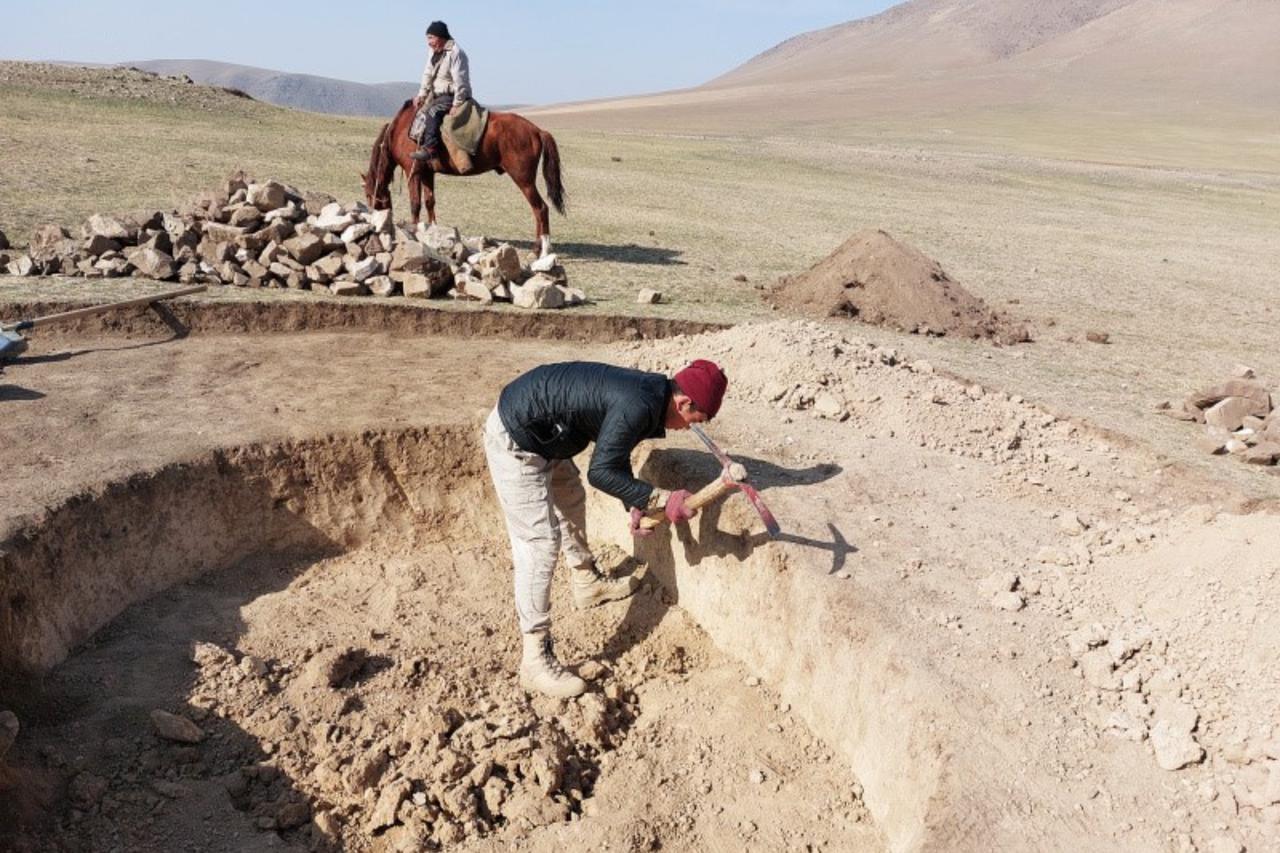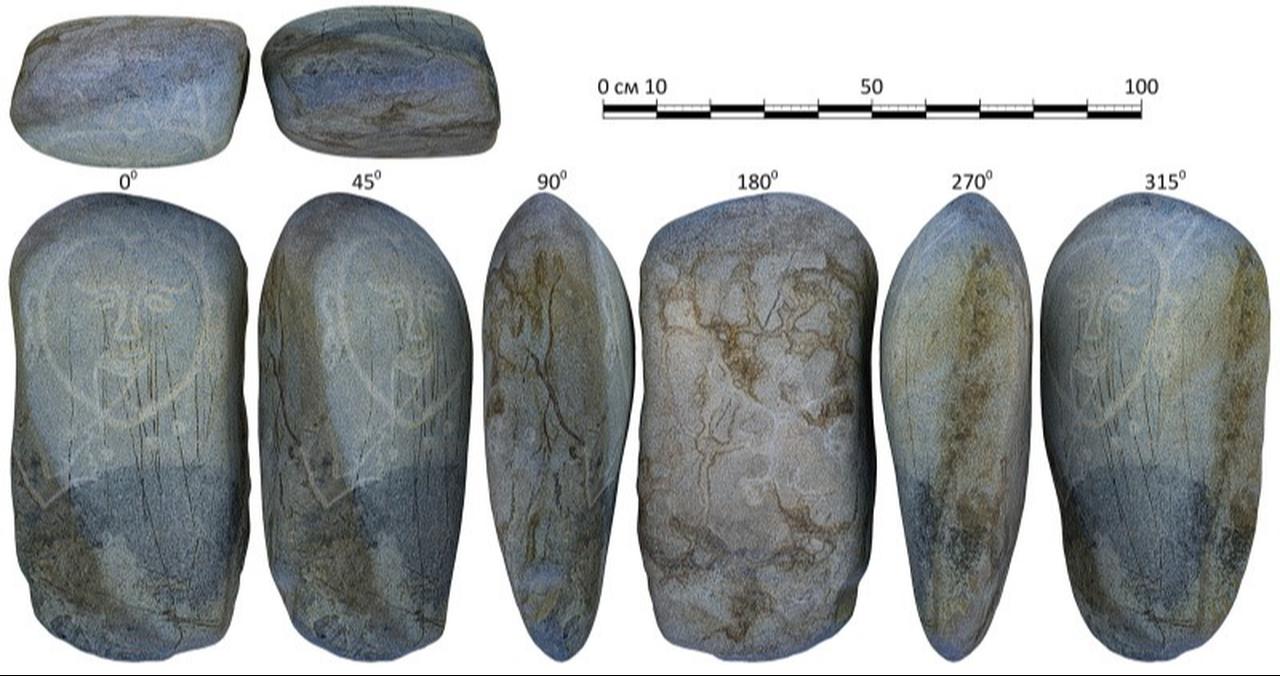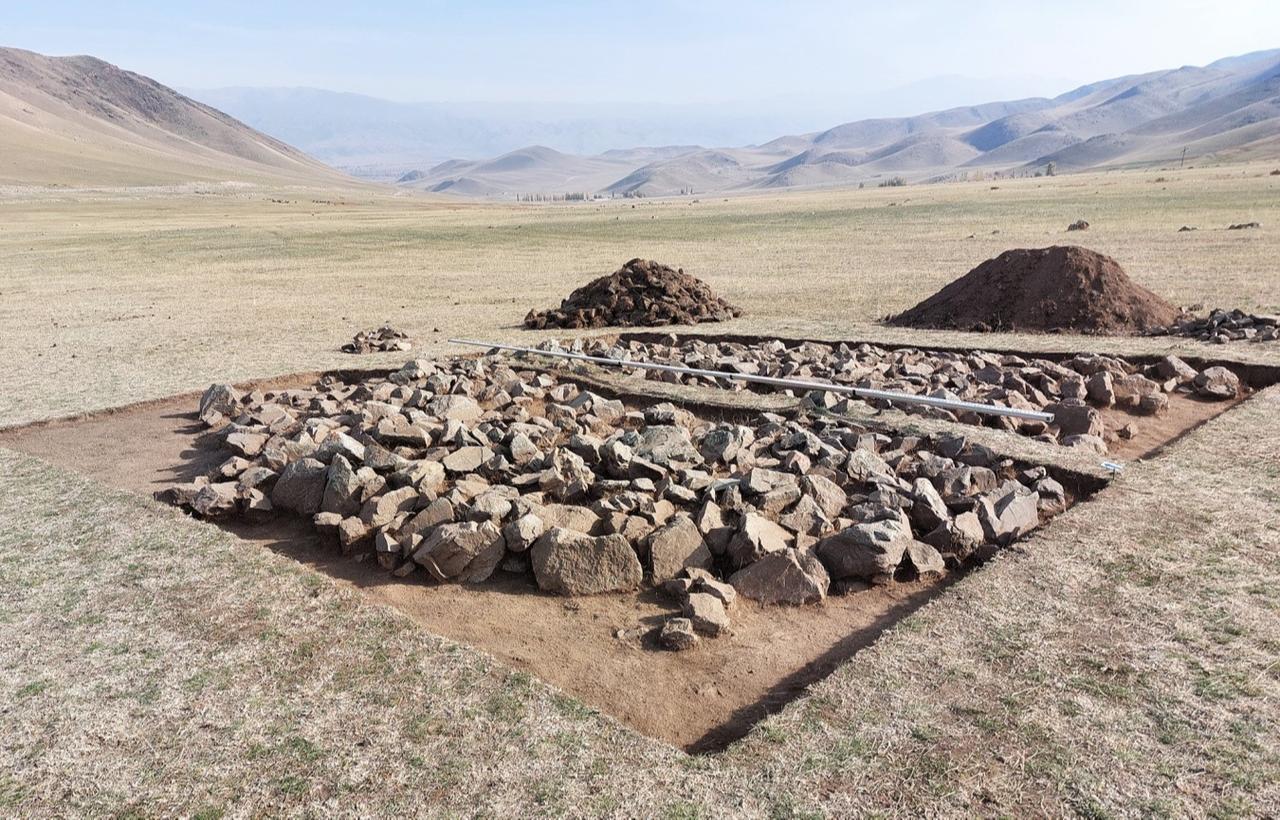
Archaeological excavations in Kyrgyzstan’s Chu region have revealed a rare stone artifact dating back to the early Turkic period. The discovery was made near Kyzyl-Oktyabr village in the Kemin district, within the Borombay archaeological complex, according to a statement by the International “Great Altai” Altaistic and Turkology Center.
The unearthed object was found inside a kurgan—a type of burial mound typical of ancient nomadic societies across Central Asia. The stone features a carved female figure wearing a distinctive three-horned headdress, a style associated with early Turkic symbolism and ritual tradition.

Researchers stated that no similar tumulus structure had been encountered in the Altai area before. “This was a first for us,” the statement read. “It is most likely a burial site, possibly linked to the Kenkol culture or even predating it.”
Alongside the excavation, experts reviewed earlier research results to better understand the cultural context of the site. They noted that several other stone structures sharing features found in hekersur-type monuments—memorial stone formations typical of Inner Asian nomads—were also documented in the area.

A total of 41 different structures were recorded at the Borombay site. However, archaeologists warned that many kurgans had been looted, while others were damaged during modern road construction.
Despite these challenges, researchers emphasize that the newly discovered stone provides a valuable glimpse into the artistic and ritual life of early Turkic peoples.